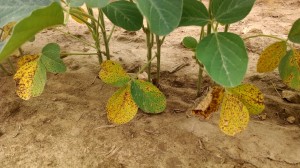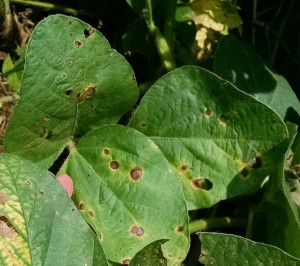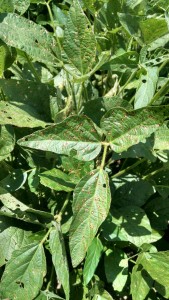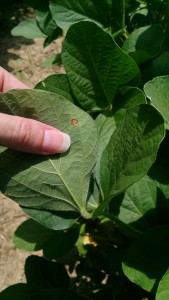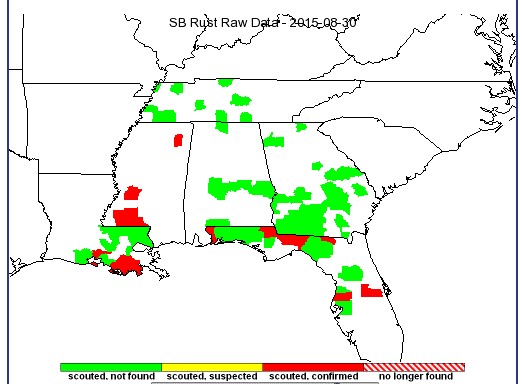Soybean fields in Tennessee vary in growth stages as well as amount of disease. The earliest planted fields are most likely past the growth stage of spraying a fungicide (R6-full seed), while later planted fields may still benefit from a fungicide application.
Foliar diseases that may be seen in Tennessee include frogeye leaf spot (FLS), Septoria brown spot, and target spot. The latter two diseases are found almost exclusively in the lower canopy, while FLS can be found throughout the canopy but usually develops on newest growth. Septoria brown spot is characterized by small irregular, dark brown spots (Picture 1), while target spot has larger lighter brown lesions, sometimes with alternating light and dark brown rings or light green to yellow halo (Picture 2). FLS symptoms include circular to angular brown to gray lesions with a purple to dark brown margin (Picture 3), on the underside of leaves FLS lesions may have a dark black area in the center where spores are being produced (Picture 4). FLS has been observed in 10 of 12 soybean sentinel plots located in middle and west Tennessee and of those all but one have some level of QoI fungicide resistance (Map 1). This information as well as historic reports of QoI fungicide resistant FLS can be found at http://frogeye.ipmpipe.org/. Combination fungicides and other fungicide groups (such as triazoles and MBC fungicides) are recommended for management of FLS.
Soybean rust (SBR) is another foliar disease of soybean, but it rarely occurs in Tennessee early enough to effect yield. Soybean rust can look very similar to Septoria brown spot in the lower canopy, only using a hand lens or dissecting microscope can one see the pustules that look like small volcanos with circular openings releasing soybean rust spores (Picture 5). Soybean rust has not been identified in Tennessee but has been found in northeast MS near Tupelo in Lee County as well as 15 miles south of the TN border in Tippah County. Visit http://sbrusa.net/ for the most up to date information on where soybean rust has been identified (Map 2 – screen shot of map from SBR website). Soybean fields near these areas may benefit from a fungicide application before growth stage R6 (full seed).
As I have mentioned in previous articles the amount and severity of a disease and effect on yield are closely associated with environmental conditions, management practices, growth stage and susceptibility of soybean variety planted. Foliar fungicide efficacy table can be found at UTcrops.com as well as more information on soybean diseases.
